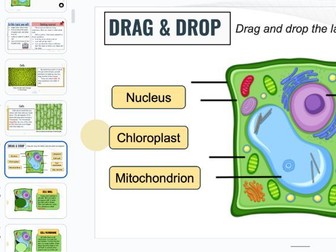Cambridge Lower Secondary Unit 1. Cells (Plant Cell, Animal Cells and Specialised Cells)
<p>This material includes experiment procedures, unit activities and end-of-chapter activity.</p>
<p>This Unit Covers the following topics:</p>
<p>1.1<a href="https://docs.google.com/presentation/d/19VBJmFLYsdOVoLoKkMzaV31Cat_pEI36/edit#slide=id.p2" target="_blank" rel="nofollow"> Plant Cells</a><br />
1.2 <a href="https://docs.google.com/presentation/d/19VBJmFLYsdOVoLoKkMzaV31Cat_pEI36/edit#slide=id.p2" target="_blank" rel="nofollow">Animal Cells</a><br />
1.3 <a href="https://docs.google.com/presentation/d/19VBJmFLYsdOVoLoKkMzaV31Cat_pEI36/edit#slide=id.p2" target="_blank" rel="nofollow">Specialised cells (Palisade cells, Root Hair Cells and Ciliated cella<br />
)</a><br />
1.4 <a href="https://docs.google.com/presentation/d/19VBJmFLYsdOVoLoKkMzaV31Cat_pEI36/edit#slide=id.p2" target="_blank" rel="nofollow">Cell, tissues and organs</a></p>
<p>In this unit the students will:</p>
<ul>
<li>begin toarn about cells</li>
<li>find out about the parts of a plant cell, and what they do</li>
<li>make a model of a plant cell</li>
<li>use a microscope to look at plant cells.</li>
<li>find out about tissues, organs and organ systems in living organisms</li>
<li>recognise and name human organs that are part of different organ systems.</li>
<li>learn about some specialised animal and plant cells</li>
<li>explain how the structure of these specialised cells helps them to carry out their functions.</li>
</ul>
